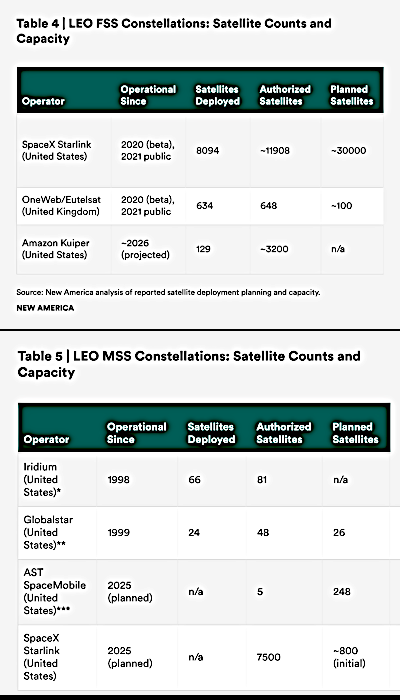A think tank releases its detailed review of the American satellite communications industry

Go here and here for originals.
Link to the press release is here. To read the actual report go here.
The report was issued by the LEO Policy Working Group, which calls itself “an independent body dedicated to providing forward-looking, data-driven analysis and policy recommendations to ensure the successful and sustainable deployment of next-generation Low Earth Orbit satellite systems.” In reviewing the membership of this group, I noticed that only one member appeared drawn from the industry itself (a former OneWeb advisor). The rest of the members were from lobbying groups, government agencies, academia, or DC think tanks.
Thus, I immediately wondered if this report was aimed against SpaceX and its present dominance, designed to justify further government regulation against it.
In reviewing the report however it does not seem so, at least on the surface. The report very accurately and detail describes the present state of the industry and all the players, including all the present constellations in orbit or under construction. It also describes the state of the launch industry on which they depend, including the risks entailed by SpaceX’s present dominance. At the same time it also notes at length that there is no evidence that SpaceX is doing anything to take advantage of that dominance.
Its recommendations are generally vague, and can be summed up simply as “Government should remain vigilant but do nothing drastic at this time.”
The report’s main benefit however its overall summary of the industry, as well as its detailed description of how the spectrum is regulated by government agencies.
» Read more

Go here and here for originals.
Link to the press release is here. To read the actual report go here.
The report was issued by the LEO Policy Working Group, which calls itself “an independent body dedicated to providing forward-looking, data-driven analysis and policy recommendations to ensure the successful and sustainable deployment of next-generation Low Earth Orbit satellite systems.” In reviewing the membership of this group, I noticed that only one member appeared drawn from the industry itself (a former OneWeb advisor). The rest of the members were from lobbying groups, government agencies, academia, or DC think tanks.
Thus, I immediately wondered if this report was aimed against SpaceX and its present dominance, designed to justify further government regulation against it.
In reviewing the report however it does not seem so, at least on the surface. The report very accurately and detail describes the present state of the industry and all the players, including all the present constellations in orbit or under construction. It also describes the state of the launch industry on which they depend, including the risks entailed by SpaceX’s present dominance. At the same time it also notes at length that there is no evidence that SpaceX is doing anything to take advantage of that dominance.
Its recommendations are generally vague, and can be summed up simply as “Government should remain vigilant but do nothing drastic at this time.”
The report’s main benefit however its overall summary of the industry, as well as its detailed description of how the spectrum is regulated by government agencies.
» Read more
